|
|
Post by keen101 (Biolumo / Andrew B.) on Feb 9, 2017 16:47:39 GMT -5
P.s. I recently bought some seeds for a variety called 'Orange Fleshed Purple Smudge'. I got it because it supposedly has some S. peruvianum heritage in it's genes. I guess that is what gives it the "purple smudge". I'm thinking it would be a good candidate to try a backcross to S. peruvianum and might have a higher rate of success.
|
|
|
|
Post by keen101 (Biolumo / Andrew B.) on Feb 10, 2017 11:26:20 GMT -5
Thanks raymondo for mentioning 'BURNLEY BOUNTY' on another forum in 2010. Since it too supposedly has S. peruvianum heritage it may be another one to try. |
|
|
|
Post by DarJones on Mar 25, 2017 6:25:32 GMT -5
Dig around on the net about Orange Purple Smudge. It has a different background than you think.
The problem is not size, it is endosperm incompatibility. The symptom is that domestic tomatoes have larger seed because the endosperm is larger. Domestic tomatoes have genes to develop a very large endosperm as compared to wild species. Crosses between domestic and wild species hit an incompatibility barrier because the endosperm genes are not compatible. This is why embryo rescue works so well with these crosses. Embryo rescue separates the embryo from the endosperm. When a blossom is pollinated, a pollen grain splits into two parts each of which contains an identical set of genes. When they reach the ovum, they split with one going to the proto-embryo and the other to the endosperm. The endosperm gets 2 sets of chromosomes from the mother and 1 set from the pollen making it triploid. About 1 time in 100, the pollen splits and then swaps with another pollen grain so that the embryo has chromosomes from one pollen grain and the endosperm from another. If Lycopersicum pollen is mixed with Peruvianum pollen, this splitting effect can very rarely result in a seed that has an embryo combining Lycopersicum and Peruvianum, but the endosperm is pure Lycopersicum. Some VERY unusual crosses have been made using mixed pollen followed by close screening of the resulting plants.
There are a few accessions in TGRC that are worth delving into for some of the projects mentioned in this and other threads. LA3969 is a complex cross that happens to get a huge dose of cold tolerance, much greater than any tomatoes mentioned here so far. LA2175 is a self-fertile S. Habrochaites line that has the best foliage disease resistance I've seen in my garden. LA2006 CV Earlinorth has the ft gene which gives very good fruit set at low temperatures. LA0417 is an S. Pimpinellifolium that has decent septoria resistance. You might also look into Piennolo del Vesuvio which can be stored ripe as "hanging tomatoes" for up to 9 months. LA2533 has some unusual disease resistance genes. Eva Purple Ball has a set of genes that induce very high fruit production when crossed with most other varieties. Sub Arctic Plenty has exceptional stress tolerance. Hibor has exceptionally high sugar content when ripe.
What would it be like to combine the cold resistance of LA3969 with low temperature fruiting from LA2006, stress tolerance from Sub Arctic Plenty, high fruit production from Eva Purple Ball, with high fruit sugar from Hibor, and long storage ability from Piennolo del Vesuvio? Add in a dose of disease resistance so it stays healthy in the garden.
WRT making crosses, the suggestion made to transfer an entire anther ring onto the stigma of the female parent is the easiest method for home gardeners to make crosses of several garden vegetables including tomato.
|
|
|
|
Post by keen101 (Biolumo / Andrew B.) on May 27, 2017 21:26:08 GMT -5
I had a class under Dr. Carl Clayberg. He was a bean breeder at that time, but he had been a noted tomato breeder. He commented in a lecture that domestic tomatoes were very hard to cross with S. peruvianum and S. Chilense, and that it had been thought for years that the F1 was just as hard to cross. Then it was discovered that unrelated F1 plants were quite interfertile. Bear in mind that if you are working for years on crossing something with zero success that "quite fertile" might mean something like 2% fertile. So I don't know how fertile the F1 plants are. I'm set up for tissue culture, and I've thought about trying these crosses. It is very easy to think about things. Tomato crosses are one of the easiest things in the world to think about. Just an update. Some seedlings have emerged in the pot labeled Solanum chilense. There might be one for Solanum pennellii but it's still early, hoping for lots of little seedlings to increase the chance of at least one making it to adulthood. I don't know if i will purposely be trying to make crosses with all these wild tomatoes and hybrids and mixed-heritage lines, but i figure if they are all growing in the same garden then that increases the likely hood of any small pollinators that may visit the wild tomatoes and make natural crosses with each other hoping that some will be naturally compatible and make fruits on their own. |
|
|
|
Post by keen101 (Biolumo / Andrew B.) on May 28, 2017 9:50:28 GMT -5
The wild tomato must be the pollen parent only as with S. Habrochaites crosses? From all the literature I've read with crossing all of the wild tomato varieties with domestics they generally or only work one way that the wild parent is the pollen donor and the domestic tomato is the seed bearer. This is often the case with other domesticated and wild species as it just seems to work better like in corn and teosinte. |
|
|
|
Post by walt on May 29, 2017 20:26:02 GMT -5
Generally, self compatible x self incompatible works better than the reverse, across plants in general. There are exceptions. So I just googled it. Yes, use the self compatible tomato as the seed parent.
|
|
|
|
Post by keen101 (Biolumo / Andrew B.) on Jun 14, 2017 1:58:20 GMT -5
The flowers on the Solanum peruvianum are amazingly bright yellow! Much brighter yellow than domestic tomato flowers! 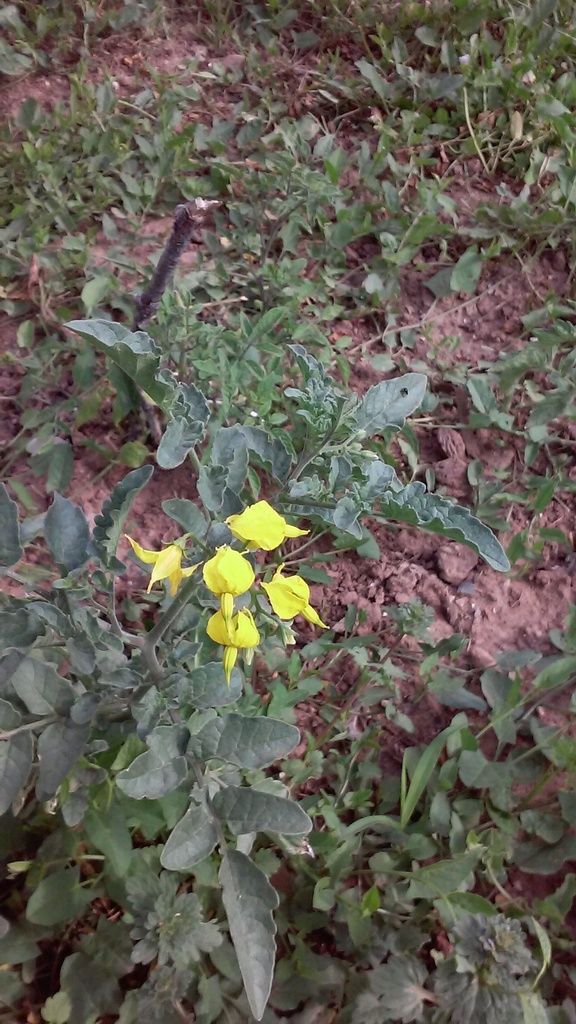 The Solanum pennellii x domestic F1 hybrid is the biggest and most robust tomato in the garden!! 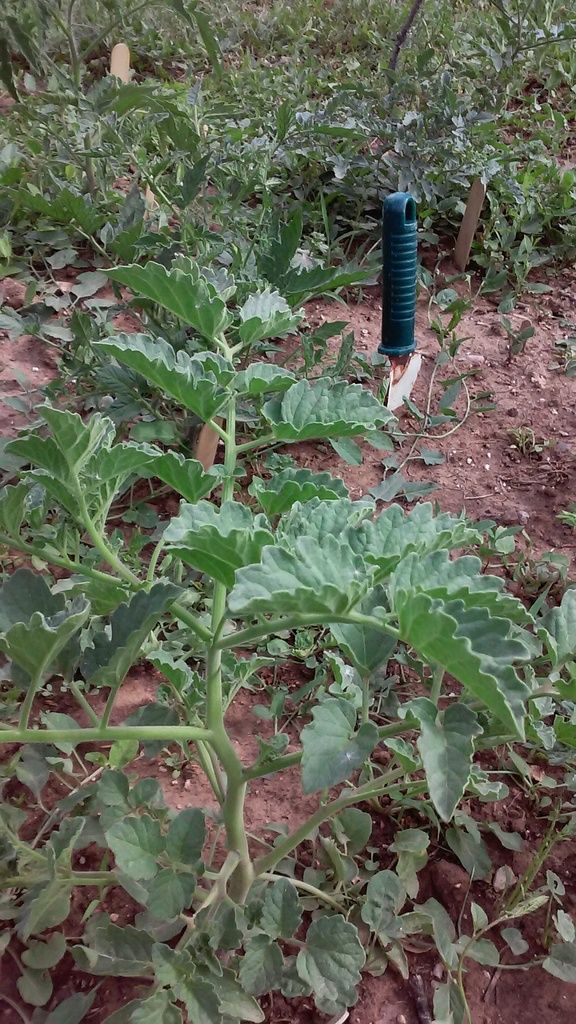 The Fern x LA1777 F2 is flowering... 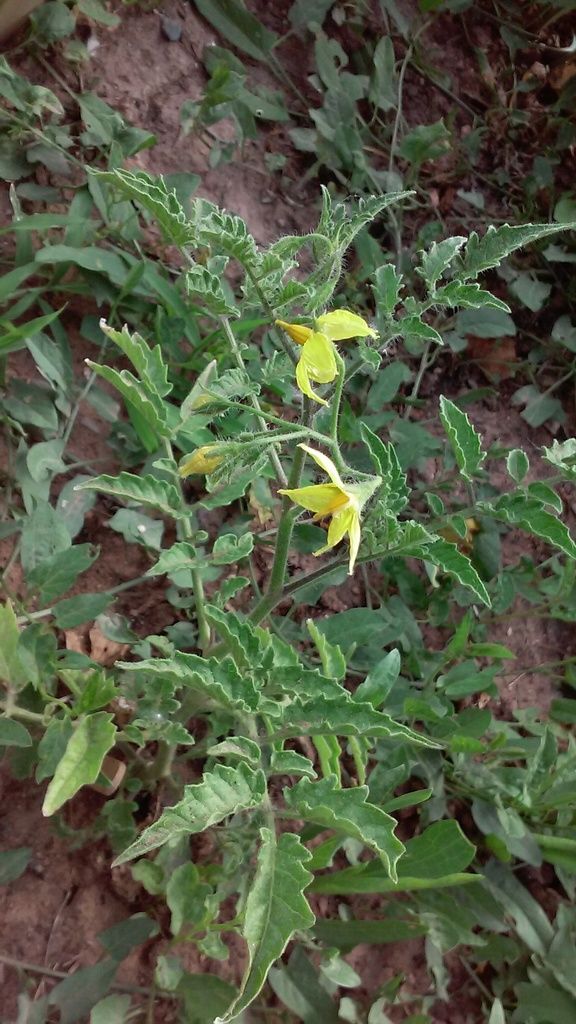 |
|
|
|
Post by keen101 (Biolumo / Andrew B.) on Jun 14, 2017 2:27:06 GMT -5
i will also add that in terms of evaluating wild varieties / traits early i am most interested in Solanum peruvianum and Solanum pennellii genetics for robustness and drought tolerance and survivability in my climate conditions with my soil and high altitude sunlight. The habrochaites, cheesmanaie, & galapagense so far with many of their wispy sparse leaf structures are so far not doing very well and are curling and growing slowly. That could change, but as of now i am not in favor of those plant traits. This is independent of flower structures or fruits at this point.
Plus the peruvianum and pennellii type plants have somewhat silvery leaves which i think are advantageous in my garden. Plus they look cool. I am very impressed with the dark bright yellow color of the peruvianum flower colors.
|
|
|
|
Post by keen101 (Biolumo / Andrew B.) on Jun 18, 2017 23:58:07 GMT -5
it had been thought for years that the F1 was just as hard to cross. Then it was discovered that unrelated F1 plants were quite interfertile. I have always suspected this with many plants. I feel like when these wide crosses happen and there is some degree of incompatibility that you would often have better success in crossing the F1s together than to attempt some sort of backcross or attempt to let them self-pollinate. I can't explain why I've always felt this way, but it's cool to hear that for some plants my thinking might actually be on track. |
|
|
|
Post by keen101 (Biolumo / Andrew B.) on Jun 19, 2017 0:06:07 GMT -5
This Solanum pennellii F1 hybrid plant is huge! The largest and most vigorous plant i have! I really LOVE these genetics. If i had these genetics in a domestic tomato they would thrive in my soil and climate. The pure Solanum peruvianum plants are also doing well. I now have a fondness for these two wild tomato genomes. This one has a exerted stigma that kind of curves in a weird pennellii sort of way. I now know why the TGRC favors this hybrid as a rootstock variety since it is so robust. 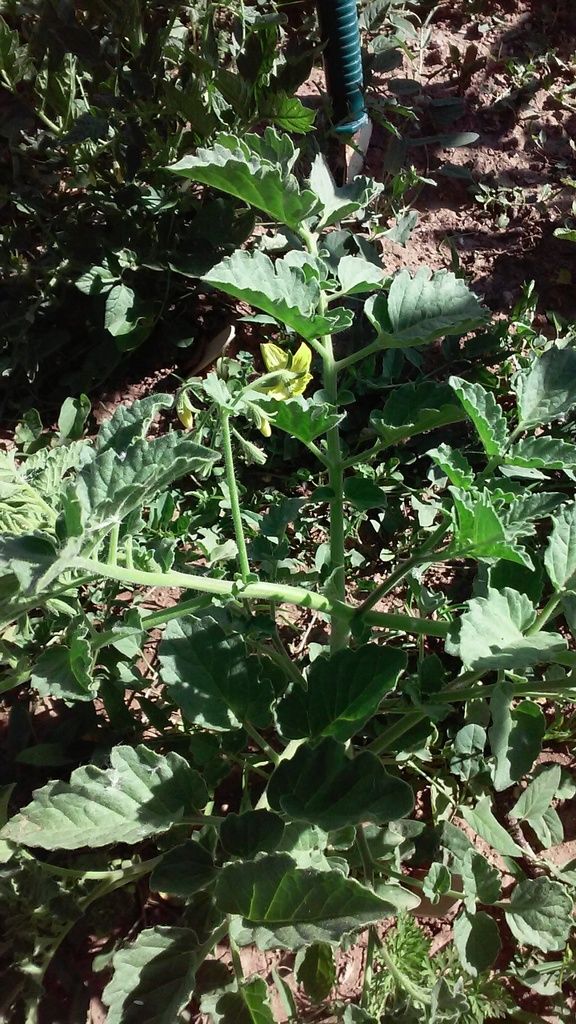 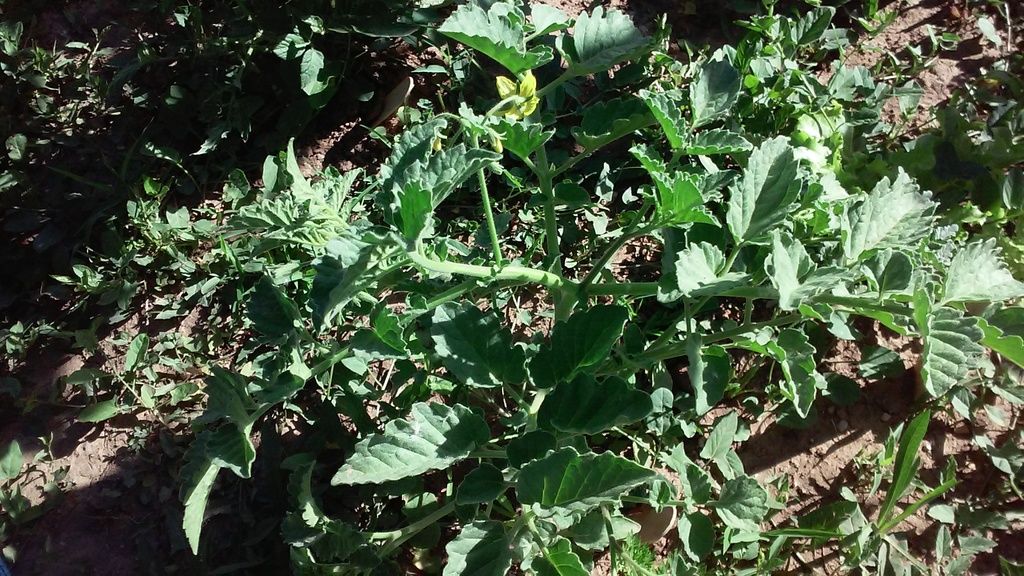 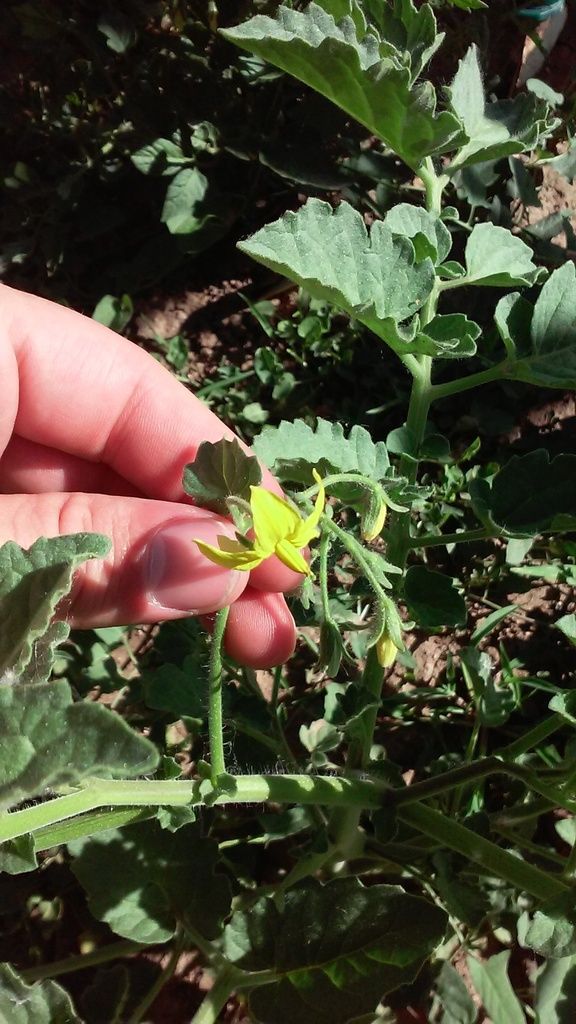 [img src=" ![]() i1010.photobucket.com/albums/af224/keen101/Garden%202017/20170618_171145_zpswuu6rj4x.jpg i1010.photobucket.com/albums/af224/keen101/Garden%202017/20170618_171145_zpswuu6rj4x.jpg" src=" " alt="Solanum Pennellii F1 hybrid"] |
|
|
|
Post by imgrimmer on Jun 19, 2017 6:48:05 GMT -5
I am really excited to see the fruits.
|
|
|
|
Post by keen101 (Biolumo / Andrew B.) on Jun 19, 2017 12:57:45 GMT -5
I am really excited to see the fruits. I am expecting the fruits to look like this:  |
|
|
|
Post by keen101 (Biolumo / Andrew B.) on Jul 1, 2017 13:00:26 GMT -5
The small bumble bee keeps coming back every morning it seems. I've seen it about 3 or 4 times by now. It LOVES the S. peruvianum flowers.Though i have not yet seen any fruits on it yet. The other S. peruvianum plant is not currently flowering anymore so there may not be enough compatible pollen. The bee seems to ignore most of the other wild or wild-ish plants nearby including the galapagos tomatoes and Joseph's F2 (fern x habrochaites). The flowers are just too pale and most are small and closed up and don't open.
And it seems to like the F1 pennellii hybrids too! The large pennellii hybrid is setting lots of fruits. I will take pictures when they get bigger. I'm not sure if this is because they have been selfed with compatible pollen or if they are compatible with the peruvianum pollen. Either way i'm thrilled. One article claimed that pennellii F1 and F2 hybrids had a low percentage of being able to set fruits (though this sounded like they were just using standard techniques of selfing those), while a different article i found said the complete opposite and said pennellii hybrids are easy to obtain viable fruits and offspring from in both the F1 and F2 generation. So at this point i'm more inclined to believe the second. Perhaps the bees and lots of other F1 and other tomato pollen is the key. One thing i had read at one point said something along the lines of that some F1 hybrid tomatoes were unable to set much fruit or seed when selfed but when crossed with unrelated other F1 plants set plenty of viable pollen. So who knows. Still, having a good size genetically diverse population of plants seems to be a good idea either way.
|
|
|
|
Post by keen101 (Biolumo / Andrew B.) on Jul 24, 2017 9:38:40 GMT -5
|
|
|
|
Post by keen101 (Biolumo / Andrew B.) on Jul 31, 2017 10:23:09 GMT -5
I think i'm finally getting a fruit or a few on Solanum pervianum! It's the one intergrown with S. habrochaites, so probably pollinated by it! The one giant pennellii hybrid is the one LOADED with fruits but it's next to a S. peruvianum plant and i know the bees have visited both, so i wonder if these fruits are the results of the pennellii hybrid being pollinated with peruvianum or being self pollinated. The other pennellii hybrid plants are not loaded with fruits, but they are in slightly different soil and have not grown as fast or as big yet either, so hard to say.
The tomato with the AFT gene and S. chilense ancestry barely has blue smudges on the fruit at all, so no blue fruits really, but for such small plants are loaded with decent sized tomatoes and has good production from my standpoint so that variety is a winner in my opinion. Will save seeds for that!
|
|